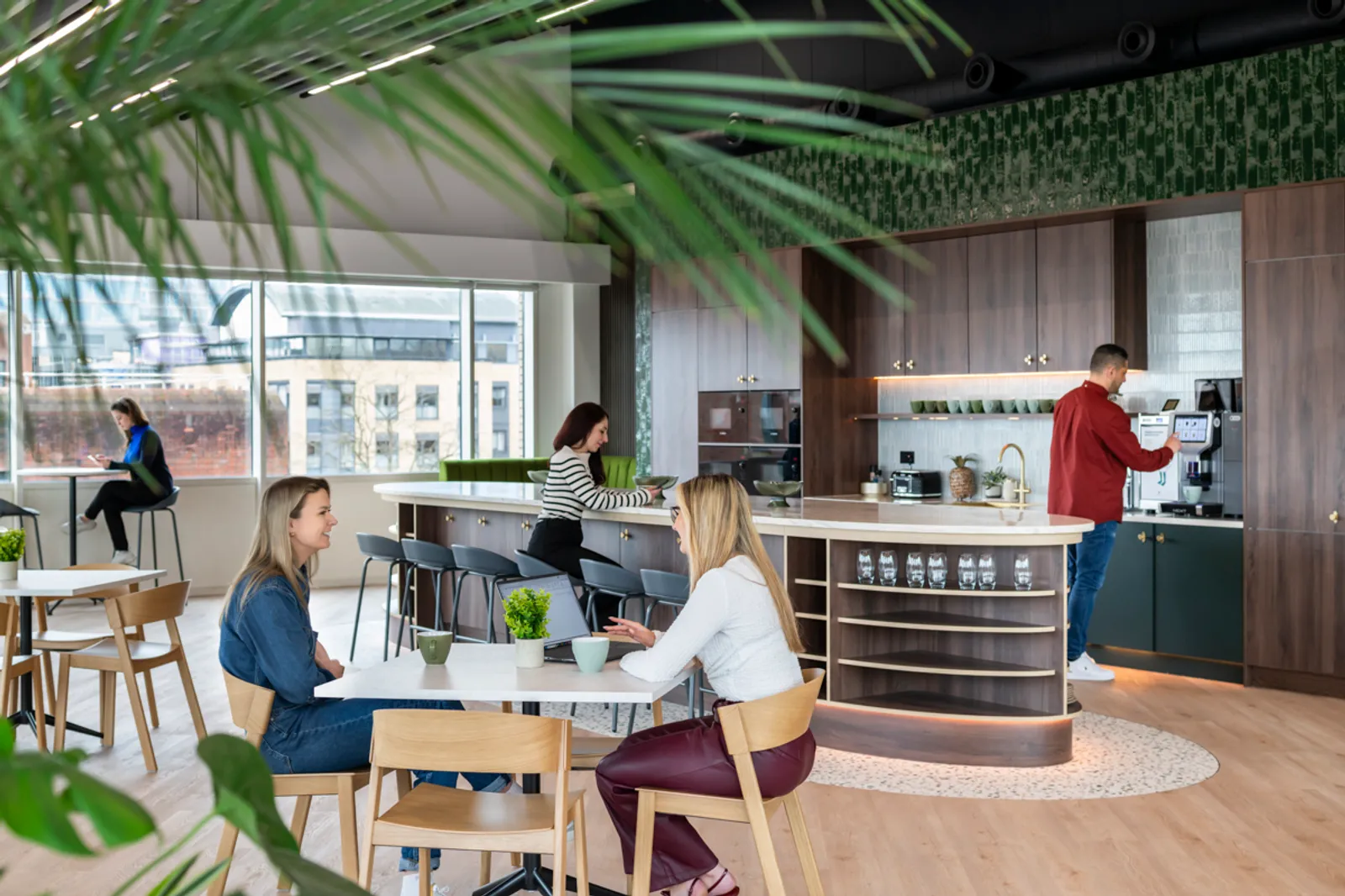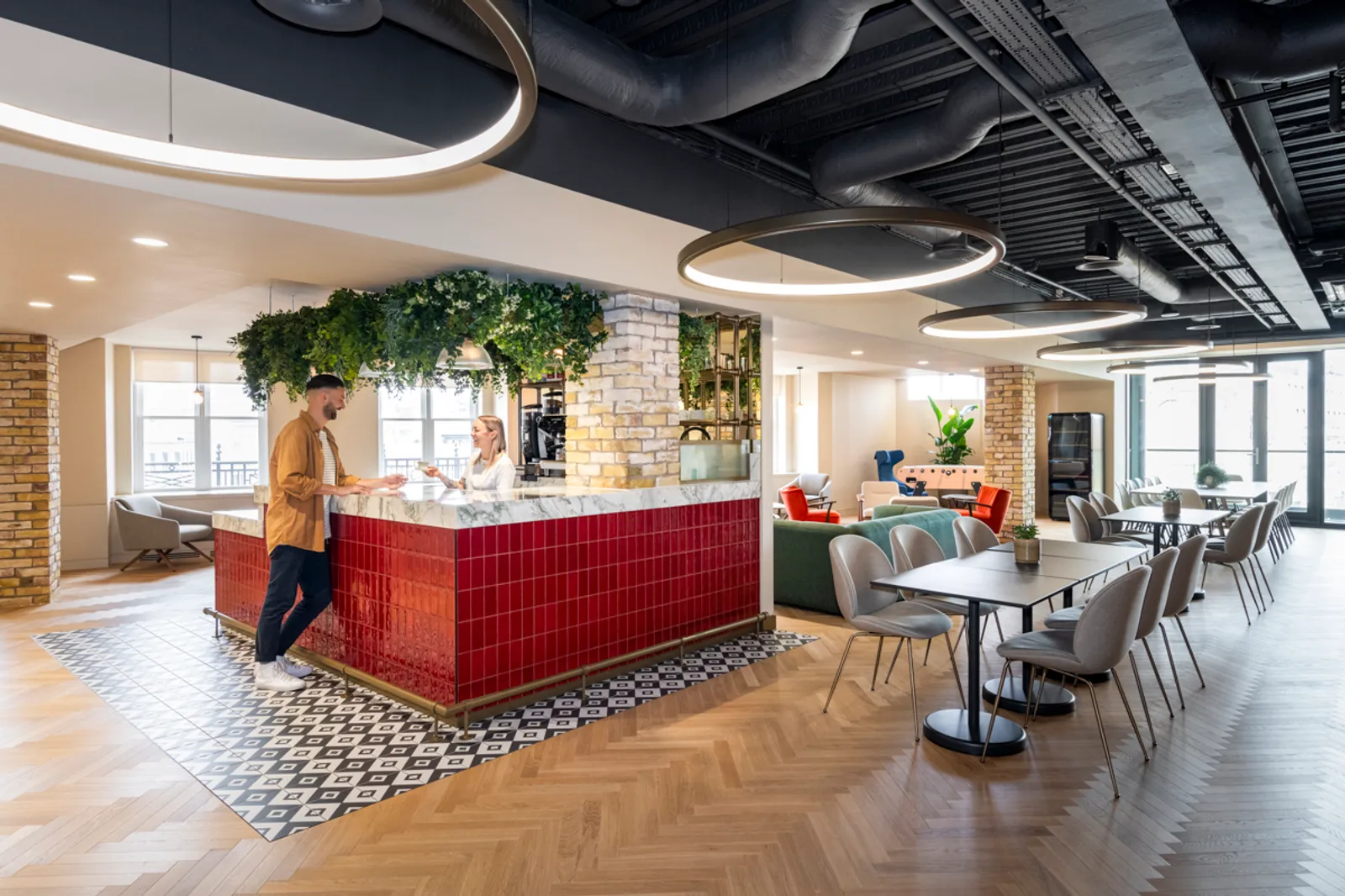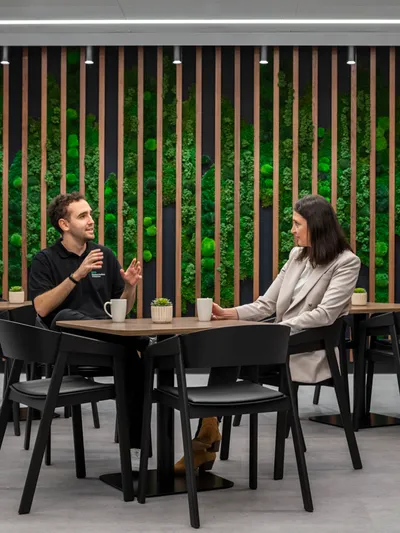As organisations continue to adapt to hybrid working and new employee expectations, office design is becoming more than a question of aesthetics – it’s a strategy for wellbeing, engagement, and culture.
We sent a team of Area designers to gather some insights from Clerkenwell Design Week in London and the 3 Days of Design in Copenhagen earlier this year – we wanted to bring them together so you can start implementing them into your office designs.
Workplace design is evolving in 2025, with workplaces actively shifting towards environments that are sustainable, emotionally intelligent, and deeply human-centred. Making it truly a more human-focused, efficiency-based environment, thinking about what is best for staff, and aesthetics.

1. Circularity in Sustainability
Sustainability is no longer a tick-box exercise – it’s the foundation of tomorrow’s workplaces. Sustainability is incredibly important for office design, and circularity – the idea of designing spaces and materials with full lifecycle responsibility in mind - dominated discussions at both festivals. The cycle of sustainability is reduce, reuse and recycle - and this is the trend’s main focus. A reliance on environmentally friendly materials, recycled and reclaimed, innovation using waste materials, craftsmanship and longevity, locally produced and design that lasts.
Sustainability in the workplace has always been a trend, but this has made it clear that circularity is becoming more and more widespread. With more inventive and a wider range of ideas being implemented. For example, A:gain presented architectural surfaces crafted from construction waste in Copenhagen. While Bolon, in collaboration with Pits-to-Table, showcased flooring made from discarded olive pits at Clerkenwell.
For businesses, this means future-proofing offices with solutions that are not only environmentally conscious but also resonate with employees and clients who prioritise ethical values. Designing a sustainable office can sometimes be tricky. You can read our guide to sustainable office design, or organise a call with us to discuss further.
2. Designing for Neurodiversity and Sensory Wellbeing
The conversation around inclusivity in design has shifted towards sensory experience. Neuro-aesthetics, acoustic innovation, and materials that support comfort for all sensory profiles are gaining traction as key design considerations. Building offices with this at the core is going to be incredibly important.
Talks hosted by Muuto in Copenhagen reinforced how retrofitting spaces with neuro-aesthetic principles – such as softer lighting, adaptable acoustic systems, and sensory-responsive materials – can make an existing workplace more accessible without major structural change.
This move towards neuro-inclusive workspacesreflects a growing understanding that productivity and wellbeing come from recognising the diverse ways people interact with their environment. Creating calmer, more responsive workplaces can help organisations foster creativity and reduce workplace stress.

3. Technology with a Human Focus
Technology is increasingly being harnessed not just for efficiency but for wellbeing. When technology and office design are centred on wellbeing, the workplace becomes not only more focused and efficient but also more inclusive.
Integrating technology into your office design is a no-brainer, and as the world and tech evolve, more options will emerge – the question will be not just what to include (and maybe not include as well!). From smart glass that adjusts opacity for privacy without power to light systems that replicate natural daylight and circadian rhythms, innovation is helping offices feel more connected to the rhythms of nature. Refurbishment is not just about upgrading finishes – it’s about integrating technologies that improve employee experience.
At Clerkenwell, switchable smart glass pods were showcased as retrofit-friendly solutions, providing on-demand privacy without bulky partitions. Meanwhile, Signify’s NatureConnect lighting demonstrates how basements and internal meeting rooms can be transformed during refurbishment, with lighting that mimics natural daylight to boost energy, wellbeing, and performance.
4. Hospitality-Inspired Atmospheres
Workplaces are being refurbished to feel more like destinations than corporate offices. Richer finishes, warmer lighting, and softer spatial layouts are being applied in refurbishments to create spaces people want to return to.
Office layouts, flexible and open offices, having offices that have that more collaborative feel was pulled out as incredibly important. Hospitality style locations have that laid back, WFH feel, with the added benefit of collaboration and communications.
Co-working spaces have that advantage which means that have the wider scope of clientele. Copenhagen’s Norr11 “I Am” exhibition highlighted how refurbishment can go beyond refreshing surfaces, instead reshaping environments to evoke emotion and belonging. For businesses, this shift can help make the office a key part of the employee experience strategy.
5. Colour Makes a Confident Comeback
Grey and white palettes are giving way to richer, more playful tones. Earth shades such as paprika, ochre, terracotta, and Pantone’s 2025 colour “Mocha Mousse” are setting the tone for the year ahead. Organisations embracing colour psychology are finding that expressive palettes can energise employees, foster creativity, and add a layer of personality to brand identity through design.

6. Biophilia Reimagined
Nature continues to influence workplace design, but the approach is becoming more sophisticated. Biophilic office design has been coming up and up for a while, with more and more research coming out about how effective it is at reducing stress and increasing efficiency.
Rather than being added as an afterthought, natural elements are now integrated into the very structure of design, from acoustics and lighting to the overall spatial concept. This evolved form of biophilia is about more than bringing plants indoors; it’s about embedding a sense of connection to nature within the core of the workplace experience.
A Human-Centred Future for Workplaces
Together, these trends point towards a future where workplaces are not simply places to work, but environments that actively support wellbeing, creativity, and collaboration. For organisations, embracing these design movements is not only a matter of aesthetics but of attracting talent, boosting productivity, and aligning with the values of a more sustainability-driven and inclusive world.




